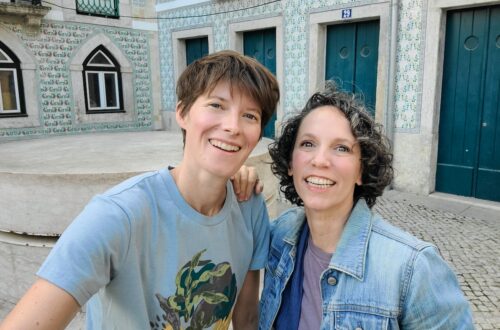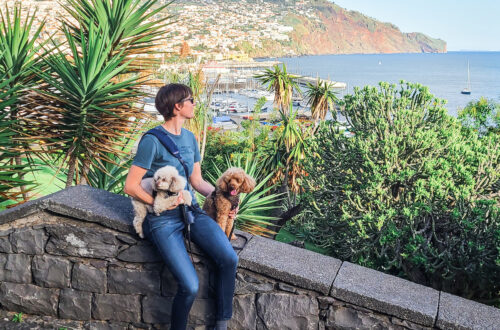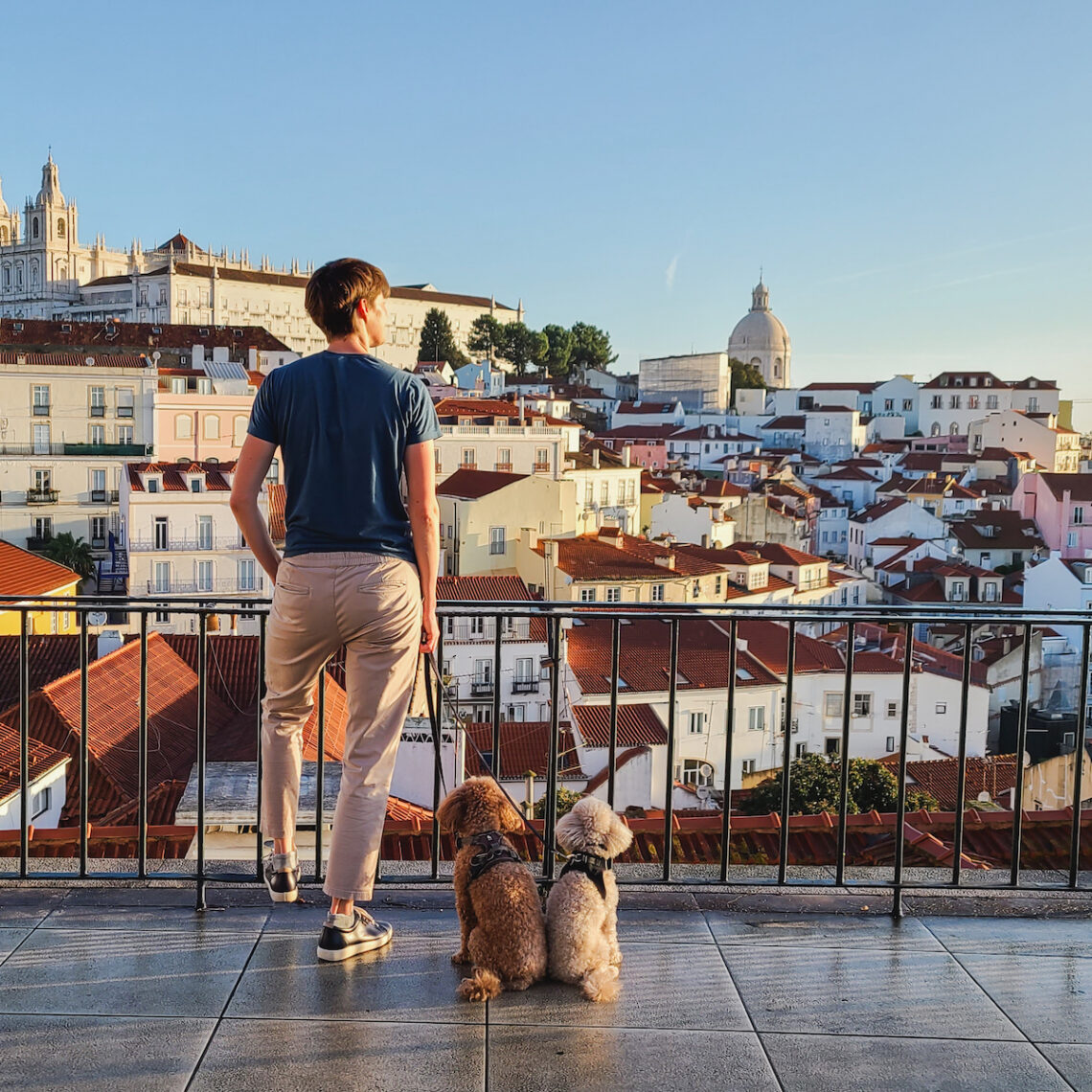
5 Tips for Experiencing Beautiful Lisbon Without the Crowds
From the moment of our arrival in Lisbon, we were absolutely shocked at the number of tourists crammed into this lovely city. We came to Lisbon to see a destination famous for architecture, scenic lookouts and rickety historic trams still running across town. What we weren’t expecting was a volume of crowds that could give Prague’s congested old town a run for its money.
Certainly the massive cruise ships parked mere blocks from the historic centre can take some of the responsibility, along with Portugal’s somewhat fading reputation as a more affordable taste of Europe.
Normally our first recommendation for avoiding crowds is to visit during the shoulder season. But this was November. We weren’t just in the shoulder season; we were in the off season when the weather has turned cloudy and often rainy. It’s hard to imagine how busy the summer must be.
Fortunately, after spending a full month, we came up with a few more tips for enjoying the city without being elbow-to-elbow with other tourists. Instead of joining the lineups at every major sight, we made it our mission to find a less touristy side of Lisbon.
It’s likely that we missed a few (or many) of the must-see attractions. However, we managed to have our own unique experience of Lisbon and the surrounding region — one that we didn’t have to share with crowds of other tourists.

Try an early morning self-guided tour
While we’ve enjoyed guided tours in cities all over the world, we decided to do things a little differently in Lisbon. We just couldn’t bring ourselves to join a large group jostling its way through slow-moving crowds.
Instead, we woke up extra early so that we could have the whole city mostly to ourselves while we listened to a free audio tour courtesy of the Rick Steves app. Tours of a small selection of European cities are offered in the app and they are all excellent.
By following an audio tour, we could enjoy the city at a less busy time of day — few tourists bother to hit the sights at 7am — and we could build in stops for such essentials as a meia de leite (similar to a cafe latte) and a pastel de nada.
Check out alternative sights
We usually suggest that crowds can be avoided by sleuthing out off-the-beaten path attractions. However, here in Lisbon, it doesn’t seem like many attractions can be truly described as off-the-beaten path; the tourists really are everywhere.
That said, the next best option is to look for alternative sights. These are the places that typically don’t get visited if you’re in Lisbon for just one day. Instead, these would be options if you’re in Lisbon for at least a little while and you’ve already seen the blockbusters.
For our time here, once we’d had our fill of fighting our way through the centre of town, the next stop was the LX Factory. This is a historic warehouse district that’s in the process of being revitalized and is home to street art, galleries, artisan shops and a healthy number of hipster restaurants and bars. It’s an easy place to browse for a couple hours while seeing a more modern side of Lisbon.
Escape the city altogether
It probably won’t come as a surprise that our favourite part of visiting Lisbon was actually getting out of the city. One of our most memorable excursions involved hopping on a bus to check out Caldas da Rainha, a scenic little town on Portugal’s Silver Coast.
Caldas da Rainha is famous for its hot springs, ceramic art and a farmer’s market that’s open 364 days a year. I was almost convinced to move there for the market alone — the lineup of produce, cheese and sweets was that impressive.
The second stop of the day was to Óbidos, a perfectly-preserved medieval town. At this point in our four years of travel, we’ve seen a great many historic European towns and squares and churches. However, Óbidos managed to wow us jaded travelers at first sight. The tiny town is completely enclosed by fortified walls, capped with a castle and positioned dramatically on a hillside.
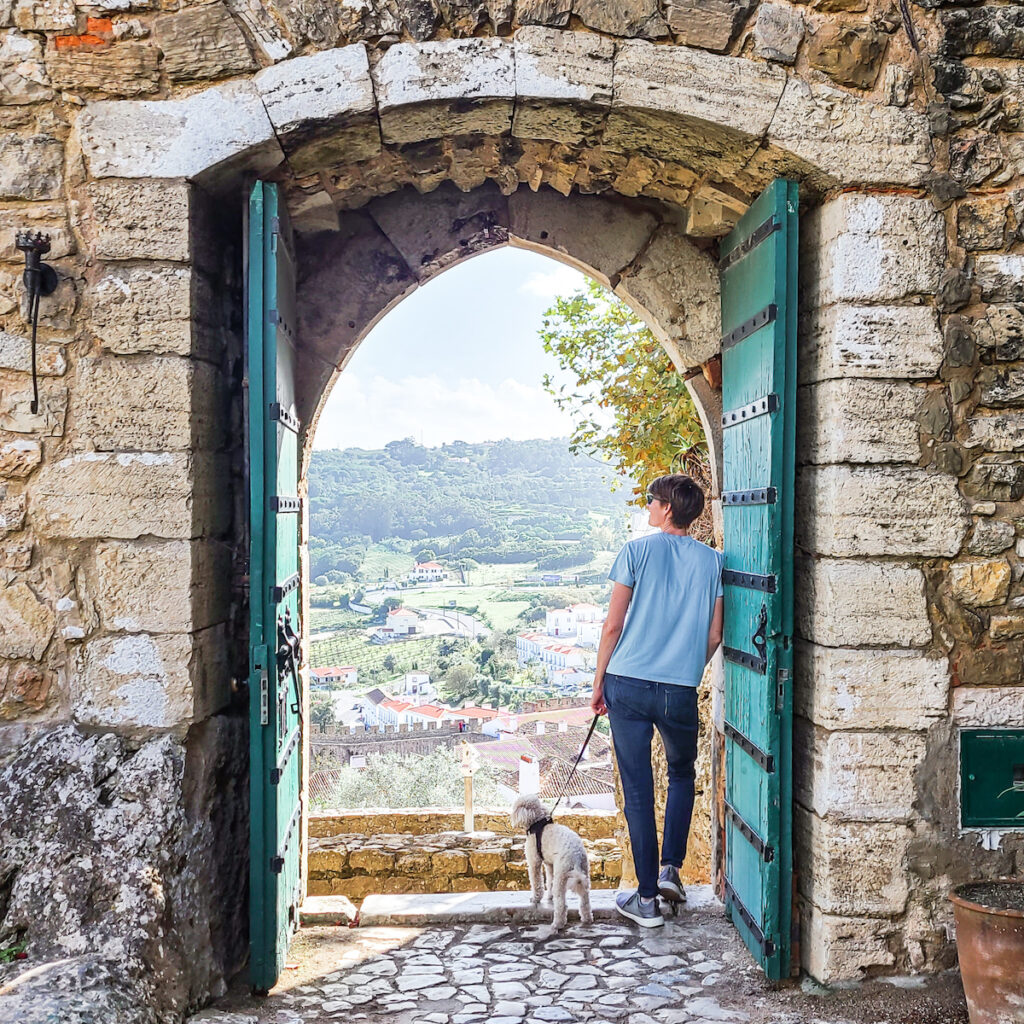
We also made the obligatory trip by rental car out to Sintra, which hosts a high concentration of palaces and castles and really is a picturesque part of Portugal.
However, we decided to give the heavily touristed Pena Palace a miss (the reviews in Google Maps told us that the interior was not as spectacular as the exterior). Instead, we did a scenic hike up to the quieter Moorish Castle (dogs permitted, by the way) and enjoyed views of Pena Palace from a distance.
We also drove out to Cabo da Roca, Europe’s most westerly point. We did the mandatory visit to the lighthouse but then left the tour buses crowds behind. We enjoyed a quiet, beautiful hike along the striking coastline following a trail that Gillian had dug up using the AllTrails app.
Eat where the locals eat
Back in Lisbon, we were also keen to avoid the tourist crowds during meal times. But we found that it was challenging to find restaurants in the city centre that didn’t cater to tourists. Most places had the tell-tale greeter standing outside and an English-language menu. It took long hours on Google Maps to find any restaurants that were convenient, high quality and frequented by locals.
In the end, we found a hidden gem in Old Alfama Square. This is a square that is ringed with poorly-rated tourist restaurants but, tucked in a quiet corner, was O Cartaxeiro. This is a simple restaurant serving a local crowd where we could fill up on fish and seafood classics and vino verde.
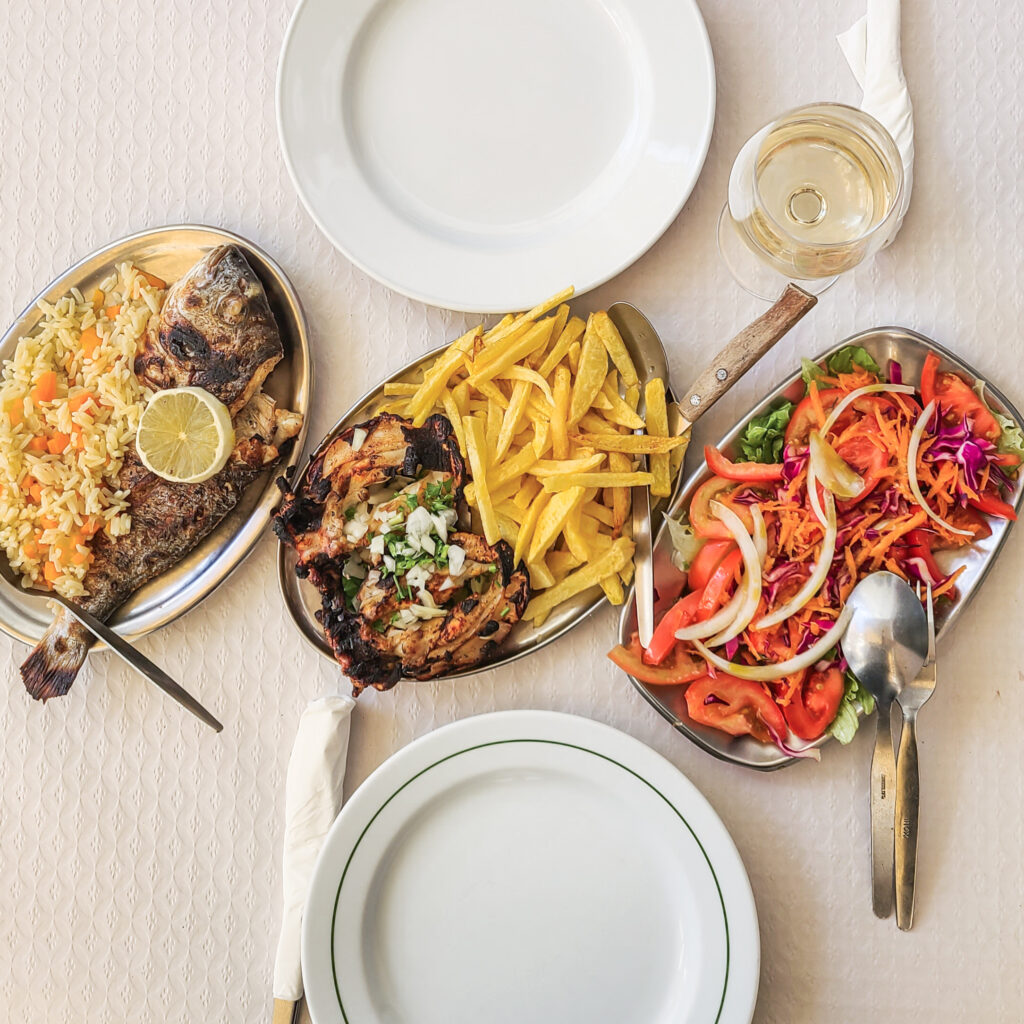
Of course, we went to a couple tourist hotspots as well. We couldn’t resist trying the pastel de nata at the famous Pasteis de Belem. After our highly scientific survey of at least a dozen different pastel de nata, I can say that these were undoubtedly the best we tried. Likely the high marks had something to do with them being served warm with cinnamon sprinkled on top.
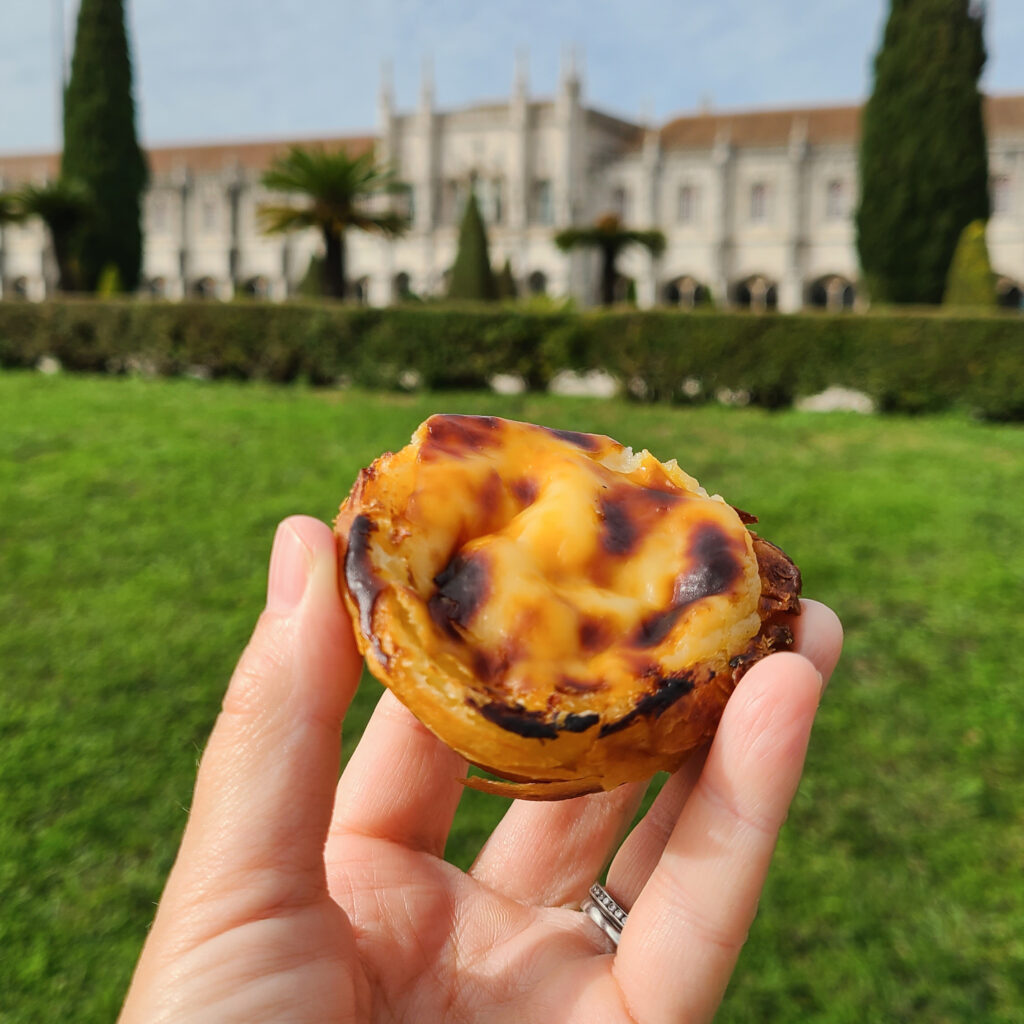
We also had lunch a couple times at Tu e Eu; this is a very popular spot so we made sure to arrive just before they opened for lunch. After looking at many menu photos featuring plain-looking fish and potatoes, we were appreciative of classics served with a little extra flair.
We had a few other favourites from Lisbon, none of which served Portuguese food:
- Cafeh Tehran for delicious Persian eats, including a very memorable cardamom cream dessert
- Pasta Fresca Italiana where we paired fresh pasta with the sauce of our choosing
- Restaurant Odaan, a simple Nepalese eatery with an excellent vegetarian thali plate
- Pizzeria Romana Bio, our go-to weeknight choice for a fast, tasty pizza
Finally, we had one very special Airbnb Experience worth mentioning. To celebrate Gillian’s birthday, we enjoyed an elevated Portuguese feast hosted by two charming brothers. We’ve done these in a number of countries and this one was particularly well executed. We ate a tasting menu of traditional dishes and spent the evening with an interesting group of international travelers.
Stay where the locals live
Because we’re slow travellers, we always choose to stay in an apartment instead of an impersonal hotel. We’re usually in a destination for a full month and we want to cook our own meals and enjoy more space than a hotel room can provide.
For our stay here in Lisbon, we ended up in an apartment in the neighbourhood of Alfama, which is very much on the tourist trail. It’s the oldest neighbourhood in the city and is the place to come for a late-night fado performance.
However, in the off season, we found it to be a relatively quiet place where locals still live. We made it a point to frequent the local businesses regularly — the cafe below our apartment, the bakery down the street — to feel like we’re part of the neighbourhood.
What we spent for a month in Lisbon
In many ways, Lisbon was everything we hoped it would be. It’s a strikingly beautiful city with a compelling history and so many distinct neighbourhoods to discover. What we appreciated less was wading through the crowds each day, even for mundane tasks like walking our dogs or picking up groceries. We found we had to get more creative with our sightseeing in order to have a less stressful experience.
As for our costs, despite the inflation that we saw throughout Europe this past summer, we managed our month in Lisbon on a very reasonable budget. We ended up spending very little on entertainment but that’s because we didn’t pay any entry fees, with the exception of $16.50 USD for our visit to the Moorish Castle.
Instead, our entertainment costs were wrapped up in our transportation costs. We used public transit and the occasional Bolt to explore other parts of Lisbon; we took the bus to the Silver Coast; and we rented a car for the day to visit Sintra and Cabo da Roca. Our total spend for getting around was just $105 USD.
Our other form of entertainment was, of course, dining out. Unfortunately, we found that there were no bargains to be found for dining out — at least not in the centre of the city. Lunch for two with wine was typically $30 to $45 USD. Our total for having restaurant meals every few days and lots of snacks in between came to $395 USD. To that I would add our Airbnb Experience for $90 USD — a bit of a splurge but that’s what birthdays are for.
The part of our spending that really surprised us — in a good way — were the groceries. After a summer in central Europe, the groceries in Lisbon were shockingly cheap. It seemed like everything in the grocery store cost just 1 or 2 EUR. We spent $280 USD for a month’s worth of groceries and we honestly haven’t paid such a small amount since we were in Colombia.
Now for our Airbnb. Our charming, old-fashioned apartment right in the heart of Alfama came in at a surprisingly low price. We paid $1,635 USD, which we had negotiated down from the listed price, and the host very kindly threw in complementary weekly cleanings — my favourite type of added value. Of course, this amount is way more than what a local would pay for a long-term rental but it was lower than what we expected for Lisbon.
The total for a month in Lisbon came in at $2,521.50 USD. After the high prices of central Europe, we felt that this was very reasonable indeed.


